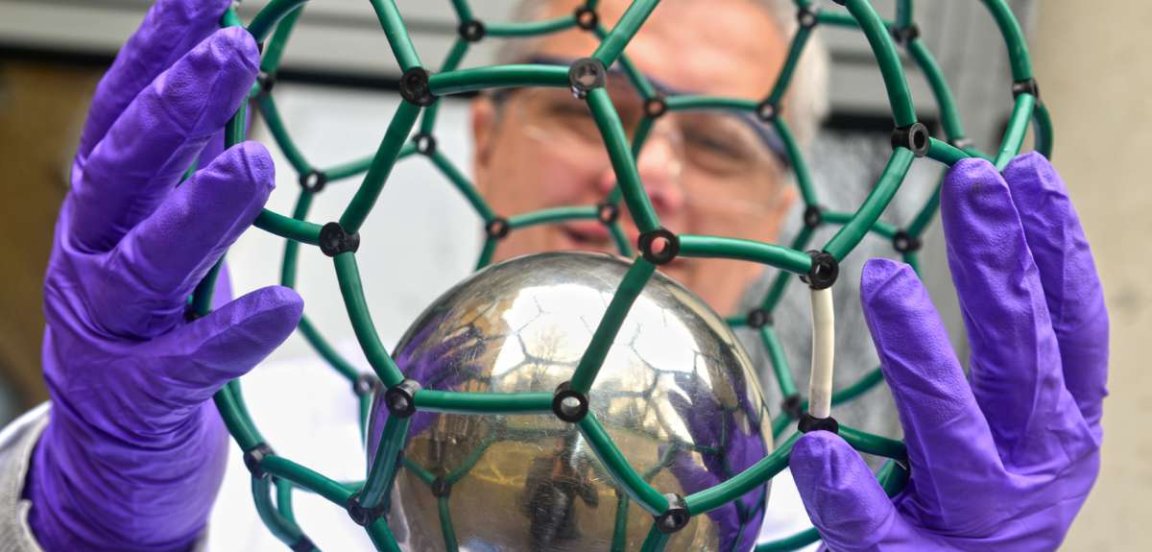
What It Is
£100m per gram. $4.2 billion per ounce. That’s how much the most expensive material on Earth costs.
Created by Designer Carbon Materials in an Oxford University lab, “endohedral fullerenes” forms a cage of carbon atoms containing nitrogen atoms. The team says that the material can be used to create small, portable atomic clocks, the most accurate time-keeping systems in the world. “At the moment, atomic clocks are room-sized,” said Lucius Cary, director of the Oxford Technology SEIS fund, in a release. “This endohedral fullerene would make it work on a chip that could go into your mobile phone.”
It could also make the GPS navigation on driverless cars accurate to within 1mm, whereas current GPS technology is accurate only up to a few yards. Cary continues, “The most obvious is in controlling autonomous vehicles. If two cars are coming towards each other on a country lane, knowing where they are to within 2m is not enough but to 1mm it is enough.”
Dr Kyriakos Porfyrakis, the founder and a nanomaterials scientist, has been researching the material since 2001. “Imagine a miniaturised atomic clock that you could carry around in your smartphone,” he said to the Telegraph; “this is the next revolution for mobile.”
Of course, with that price tag, it’s a rather costly revolution.
A Costly Endeavour
The Buckminsterfullerene material (or “bucky-ball” because of its shape) is made up of just 60 carbon atoms. Designer Carbon Materials recently sold its first 200mcg of the material for £22,000, which equals out to just about $33,000.